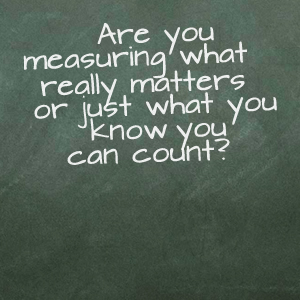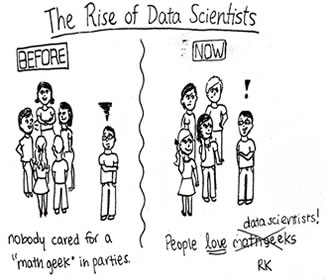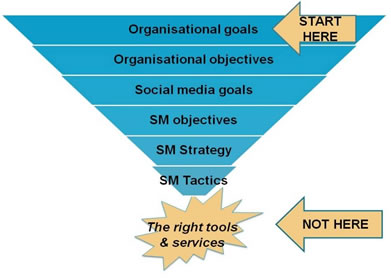Chapter 7
Measuring social media – sensibly, easily and affordably

 by Richard Bagnall, CEO, PRIME Research UK
by Richard Bagnall, CEO, PRIME Research UK
The communications function at Not for Profit organisations is under intense pressure. The economic climate has increased the demand for the services and support of most NFPs, while simultaneously squeezing budgets to levels rarely experienced before. As communicators, we are living through an era of unprecedented change in our professional lives. The advent of digital and social media, in particular, has revolutionised the media, disrupted journalism, fragmented audiences and seen control of mass communication shift from the hands of a few media barons to anyone who can communicate interesting content with eloquence in a timely manner.
The knock on effect of these structural changes is that the discipline of communications – and PR itself – has also had to change. No longer can media relations be the default tactic employed. The era of the ‘spray and pray’ of a press release to multiple publications is behind us. Social and digital media has blurred the lines between competing marketing disciplines. As silos inside organisations come down, professional communicators are being asked to employ many more tactics – traditional media relations, social media campaigns, influencer identification / relations, content marketing, insights and analytics. This is happening across the full spectrum of earned, owned and paid media. Communicators need to utilise many more skills, across more channels and in more marketing disciplines.
Despite these massive changes, we are expected to do more with less. This age of austerity has created a corresponding age of accountability, where it has become vital to ensure that every pound spent counts. We need to be more efficient, to plan and refine campaigns effectively, and then to measure in a credible and meaningful manner that speaks to the value that our contribution offers our organisation.
And here lies the problem. The methods that we used to measure the effectiveness of our work in the pas tare no longer adequate. The basic content metrics we used across our media outputs are losing meaning.
 Counting clips is a fool’s game when the universe of content is infinite and growing exponentially. Sourcing all content is harder than ever before. No two platforms will agree with each other over such basic metrics as just number of clips. And even if they did, which are the clips that matter? Many of the other metrics that we used to rely on, including OTS, impressions and reach, are becoming less and less meaningful as it becomes increasingly apparent that, at best, they are no better than a guess and not as accurate. Even AVEs – rightly a much derided metric – are even less meaningful in today’s digital world.
Counting clips is a fool’s game when the universe of content is infinite and growing exponentially. Sourcing all content is harder than ever before. No two platforms will agree with each other over such basic metrics as just number of clips. And even if they did, which are the clips that matter? Many of the other metrics that we used to rely on, including OTS, impressions and reach, are becoming less and less meaningful as it becomes increasingly apparent that, at best, they are no better than a guess and not as accurate. Even AVEs – rightly a much derided metric – are even less meaningful in today’s digital world.
As an industry, we need to realise that counting the things that are easy to count does not necessarily mean we are measuring the stuff that matters. Just because a social media monitoring platform has a dashboard or some charts in it, it doesn’t mean that it’s providing accurate or meaningful measurement.
So what are we to do? Well, the good news is that there is an answer to these problems that all NFPs can employ which isn’t dependent on any one supplier or vendor, can be done in-house if required and doesn’t have to cost the earth. Here’s the process we need to employ.
First, we plan. Before every campaign we sit down and think about what success looks like. What is the reason for doing the work; what are we trying to achieve? Our objective needs to align to the overall goals and ambitions of the organisation that we represent.
Once this is clear, we need to think about the tactics and channels that will be employed. What are the reasons for using each that align with our overall objectives, what are our targets and what does success look like in each case? The work that we are going to do, our ‘outputs’, needs to align with the take-outs and the outcomes that our organisation is looking to generate.
Our measurement then needs to tell the story and to link each of these stages. The best way of doing this is to use one of AMEC’s valid metrics frameworks.
In my experience, the framework that NFP’s have found most useful is the ‘Paid, Owned and Earned’ media integrated communications measurement framework which can be found, along with a user guide, case studies and sample metrics to consider, at this link.
There is no silver bullet.
It’s about employing a thought process and an approach that is meaningful and credible to your specific organisation. AMEC’s measurement frameworks have been designed with this in mind and to help you prove the value of what you do.
 Richard Bagnall
Richard BagnallCEO PRIME Research UK and SVP PRIME Research Europe
Richard is CEO of international communications measurement consultancy specialists PRIME Research, which has nine offices around the world, employs more than 700 staff and provides analysis and consultancy services on mainstream and digital media to many of the world’s most recognised brands and organisations. He is a board director of AMEC, where he chairs the Association’s social media measurement group; a member of the CIPR’s (Chartered Institute of Public Relations) Social Media Panel; and a member of the UK Government Communications Service’s Cabinet Office Evaluation Council, which guides Government departments on how best to measure their communications.